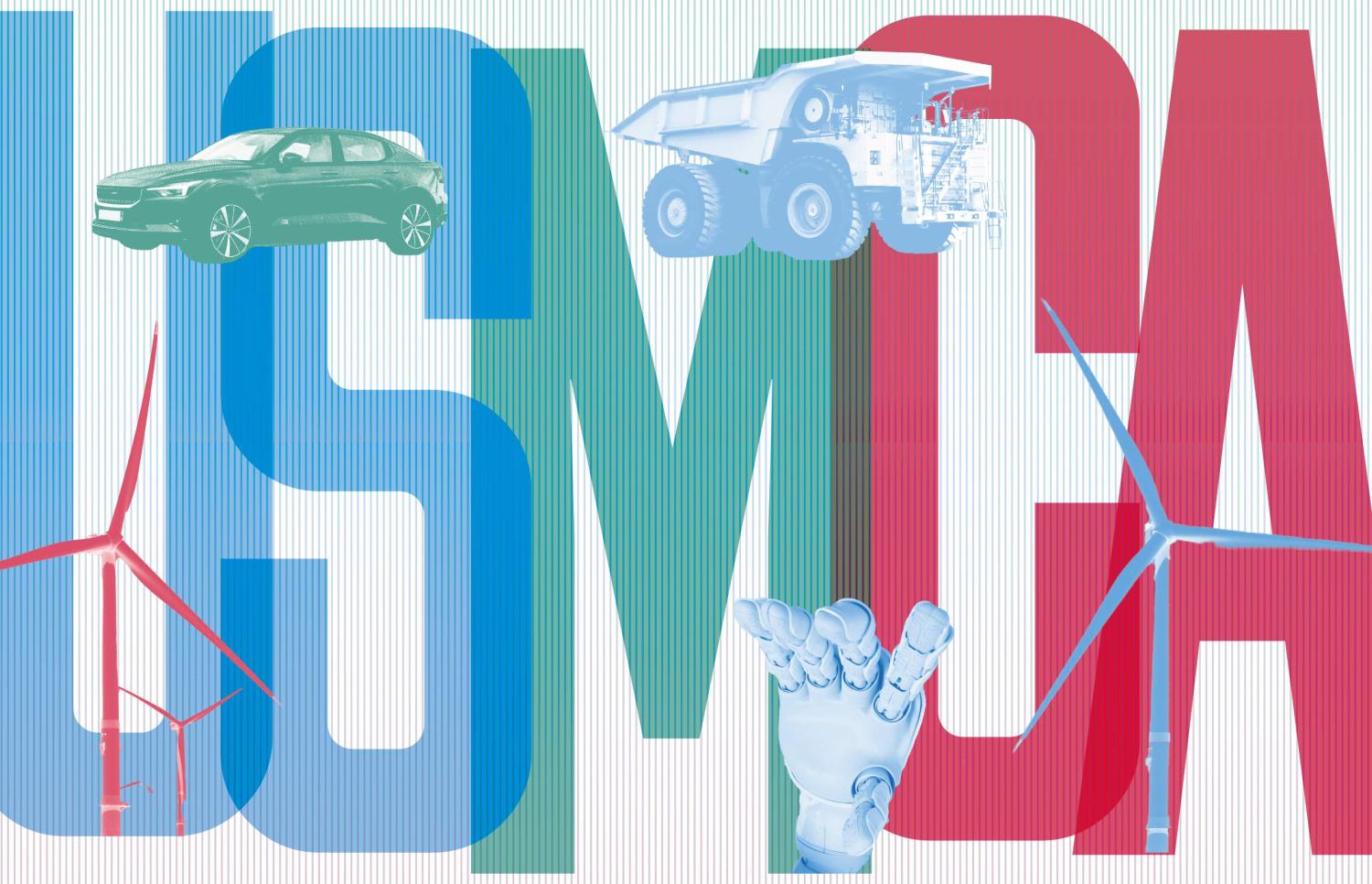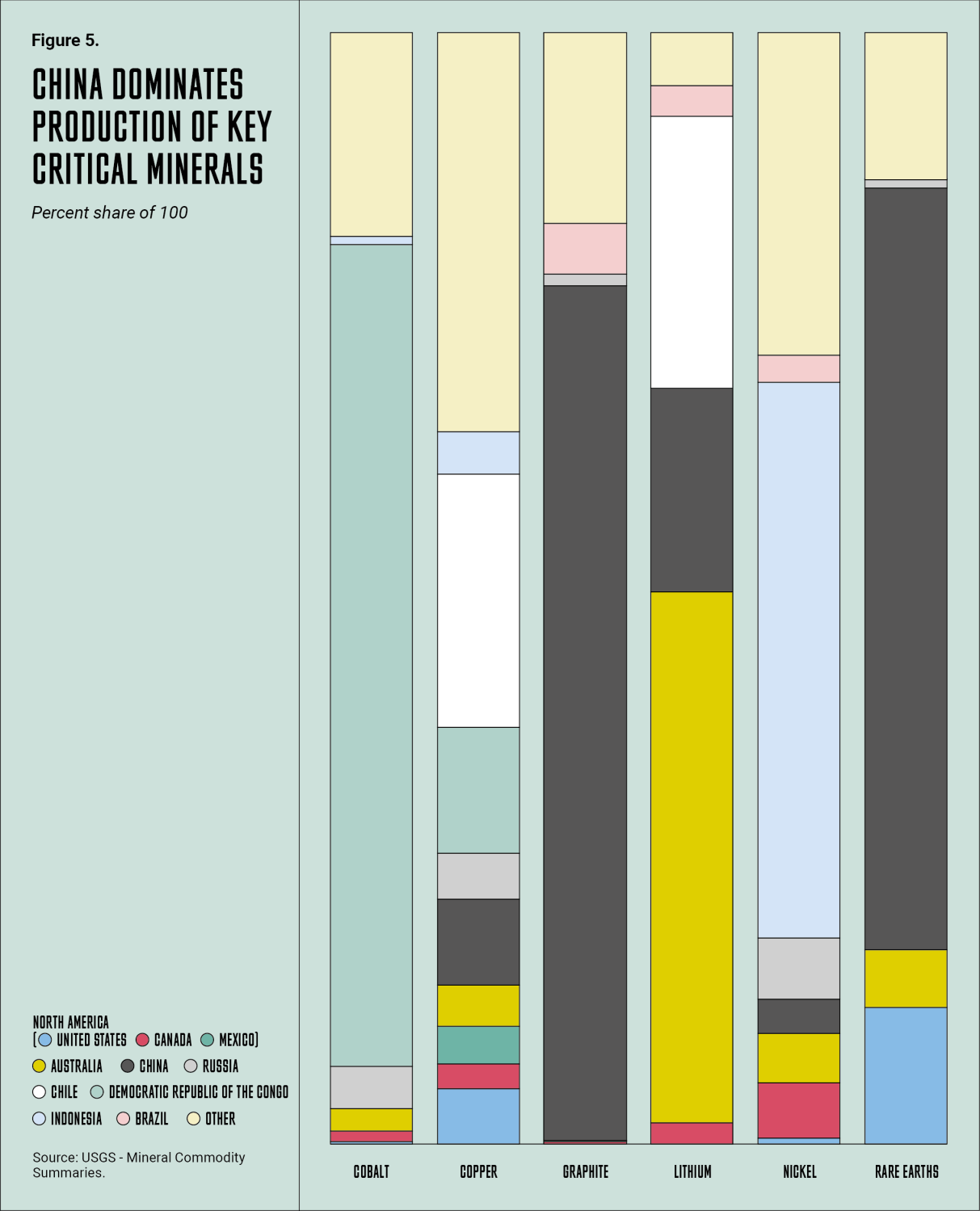This viewpoint is part of Chapter 2 of USMCA Forward 2025, which focuses on areas where deepening cooperation between the United States, Mexico, and Canada can help advance key economic and national security goals.
The word “supply chain” was a term many people probably did not think about very much until a few years ago. Countries around the world are considering today whether their supply chains are well suited to the geopolitical dynamic of our time.
The minerals and metals needed to support the modern economy are one of the most economically and geopolitically significant supply chains—as evidenced by President Donald Trump highlighting the need to “assess the national security implications of the Nation’s mineral reliance” in his executive order declaring a national energy emergency.
These concerns are by no means confined to the U.S.—the metals and minerals that underpin industrial production from technology, defense, energy systems, to electric vehicles—are not available everywhere or in the size, quality, standards, or stage of processing required by industry.
When it comes to critical minerals, countries want suppliers they can trust to reliably deliver at a scale and quality they can count on and enabled by relationships that will stand the test of time.
Delivering on these expectations requires a combination of access to capital, skilled workforce, capacity for innovation, rigorous health and environmental standards, and the ability to navigate geopolitical and macroeconomic volatility. In this context, the North American market has all the attributes to support the capital and technology-intensive projects that constitute the critical minerals supply chain. The new generation of mining and metals projects across the continent represent innovation through the secondary recovery of minerals from tailings, redevelopment of brownfield sites, new technologies to map ore bodies and increase recovery rates, and more efficient recycling of metals from end-of-life products.
For Rio Tinto, the USMCA is a foundational element of our U.S. and Canada operations, which are built around a spirit of collaboration.
All these initiatives benefit from cross-border infrastructure, frictionless trade flows, and joint government efforts between Washington and Ottawa to work with industry to build resilient supply chains in critical minerals and beyond. Cooperation in critical minerals gained speed in the first Trump administration, which created the first government critical minerals list and spearheaded efforts to bolster production from the domestic market and key allies like Canada.
For Rio Tinto, the USMCA is a foundational element of our U.S. and Canada operations, which are built around a spirit of collaboration. Among our 57,000 global employees, there are nearly 18,000 in Canada and the U.S. working in partnership with our unions and local communities. Rio Tinto’s business operation across the U.S. and Canada provide numerous examples of how cross-border trade and investment supports U.S. and Canadian businesses and jobs. For example, the aluminums we deliver from Canada to almost 200 customers in the U.S. are not only the largest sources of aluminum supply to the U.S., but also the most competitive and lowest carbon alternative for those customers today. This includes providing abundant and affordable hydro-powered electricity from Quebec and British Columbia, which creates a strategic advantage for U.S. industries facing fierce global competition in sectors such as aerospace, automotive, and clean energy. Our Canadian teams are also the second largest supplier of high-grade iron ore and the largest supplier of titanium feedstock to the U.S. market, supporting jobs and production in the steel sector. In 2023, Rio Tinto became partners with North America’s largest aluminum recycling business, Matalco.
To provide another example, responsibly produced copper and domestically mined borates are vital inputs into things from agriculture to defense equipment. Rio Tinto’s copper project in Arizona will provide up to a quarter of the copper needed in America, and the acquisition of Arcadium Lithium will enable Rio Tinto to support a variety of energy storage and digital infrastructure applications across North America.
Finally, and importantly, because critical minerals are key to national resilience and security, we are working with government agencies to develop our supply of scandium, titanium, gallium, tellurium, among others, from our mining operations in Canada and the U.S.
Collectively, our investment program will allow a significant change for Canadian and U.S. self-sufficiency in strategic sectors. With USMCA renewal coming up in 2026, and a broad review of trade arrangements with the U.S. and Canada already underway, there has never been a more important time to demonstrate the benefits of cross-border, resilient supply chains for critical minerals.
-
Acknowledgements and disclosures
Rio Tinto is a donor to the Brookings Institution. The conclusions and recommendations of any Brookings publication are solely those of its author(s), and do not reflect the views of the Institution, its management, or its scholars.
The Brookings Institution is committed to quality, independence, and impact.
We are supported by a diverse array of funders. In line with our values and policies, each Brookings publication represents the sole views of its author(s).






Commentary
Better together: USMCA and North American critical minerals flows
March 5, 2025